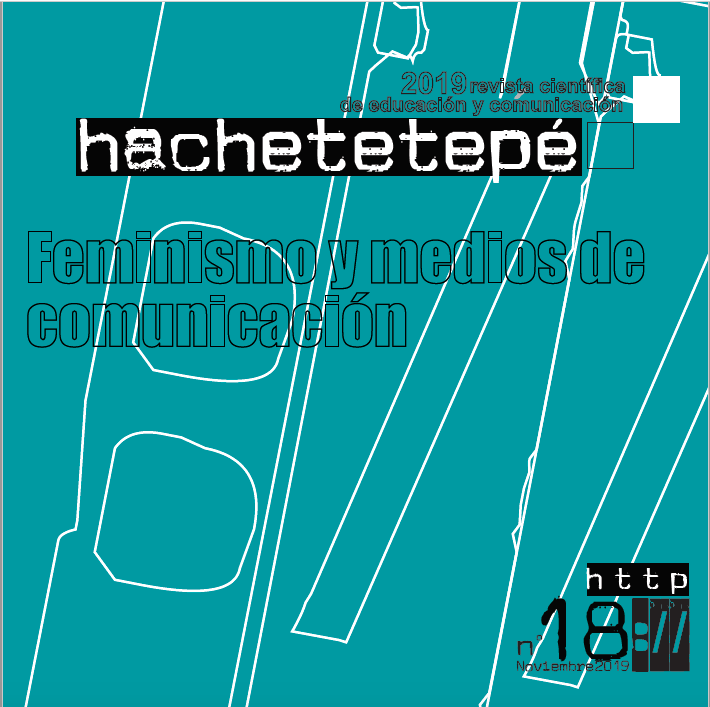Women filmmakers engender new role models in Film and TV production
Abstract
Recent media studies, through research data and audiovisual criticism, reveal fundamental characteristics in Eurocentric audiovisual productions – hegemonic worldwide – which instigate and root archaic (intersectional) gender stereotypes and representations that permeate diverse cultures within global societies. Audiovisual productions made by new generations of female filmmakers – directors, screenwriters, producers and actresses – have marked necessary and urgent transformations on female representations and role models for children and young women.
Keywords
Downloads
How to Cite
License

This work is licensed under a Creative Commons Attribution-NonCommercial-NoDerivatives 4.0 International License.
Those authors who have published with this journal, accept the following terms:
- They will retain their copyright and guarantee the journal the right to first publication of their work, which will simultaneously be subject to the Creative Commons Attribution License . They may be copied, used, disseminated, transmitted and publicly displayed, provided that the authorship, url, and magazine are cited, and are not used for commercial purposes. No derivative works are allowed.
- They may adopt other non-exclusive license agreements for the distribution of the published version of the work (e.g., deposit it in an institutional telematic archive or publish it in a monographic volume) provided that the initial publication in this journal is indicated.
- Disseminate your work through the Internet (e.g., in institutional telematic archives or on your website) once the manuscript is accepted, which may lead to interesting exchanges and increased citations of the published work. (See The effect of open access).
Hachetetepé. Scientific journal of education and communication does not charge a fee for the submission of manuscripts or for the publication of its articles.
References
COMMON SENSE MEDIA. Research: Watching Gender. Disponible en:
https://www.commonsensemedia.org/research/watching-gender#
Geena D. Institute on Gender in Media (If she can see it, she can be it™). Research: Informs & Empowers. Disponible en: https://seejane.org/research-informs-empowers/
GELEDÉS Instituto da Mulher Negra. 10 desenhos infantis inteligentes e que promovem a igualdade. Disponible en: https://www.geledes.org.br/10-desenhos-infantis-inteligentes-e-que-promovem-a-igualdade/
Kaplan, E. (1995). A Mulher e o Cinema: Os Dois Lados da Câmera. Rio de Janeiro: Rocco.
M DE MULHER. The Handmaid’s Tale: motivos para ver a série vencedora do Emmy. Disponible en: https://mdemulher.abril.com.br/cultura/the-handmaids-tale-o-conto-da-aia-margaret-atwood/
Mulvey, L. (1989). Visual and Other Pleasures: Theories of Representation and Difference. Bloomington and Indianapolis: Indiana University Press.
Oliveira, S (2012). Por uma História do Possível – Representações das Mulheres Incas nas Crônicas e na Historiografia. São Paulo: Paco Editorial, 2012.
ROTTEN TOMATOES. Girls Trip. Disponible en: https://www.rottentomatoes.com/m/girls_trip
USC Viterbi School of Engineering. Central Female Characters Movies. Disponible
en: https://viterbischool.usc.edu/news/2017/08/central-female-characters-movie/
WOMEN AND HOLLYWOOD. Wonder Woman is Now the Top Female Helmed Film at the Domestic Box-Office. Disponible en: https://blog.womenandhollywood.com/wonder-woman-is-now-the-top-female-helmed-film-at-thedomestic-box-office-f38eba286f3b
WOMEN IN TV AND FILM. It’s a Man’s (Celluloid) World. Disponible en: http://womenintvfilm.sdsu.edu/its-a-mans-celluloid-world-portrayals-of-female-characters-in-the-top-100-films-of-2015/






